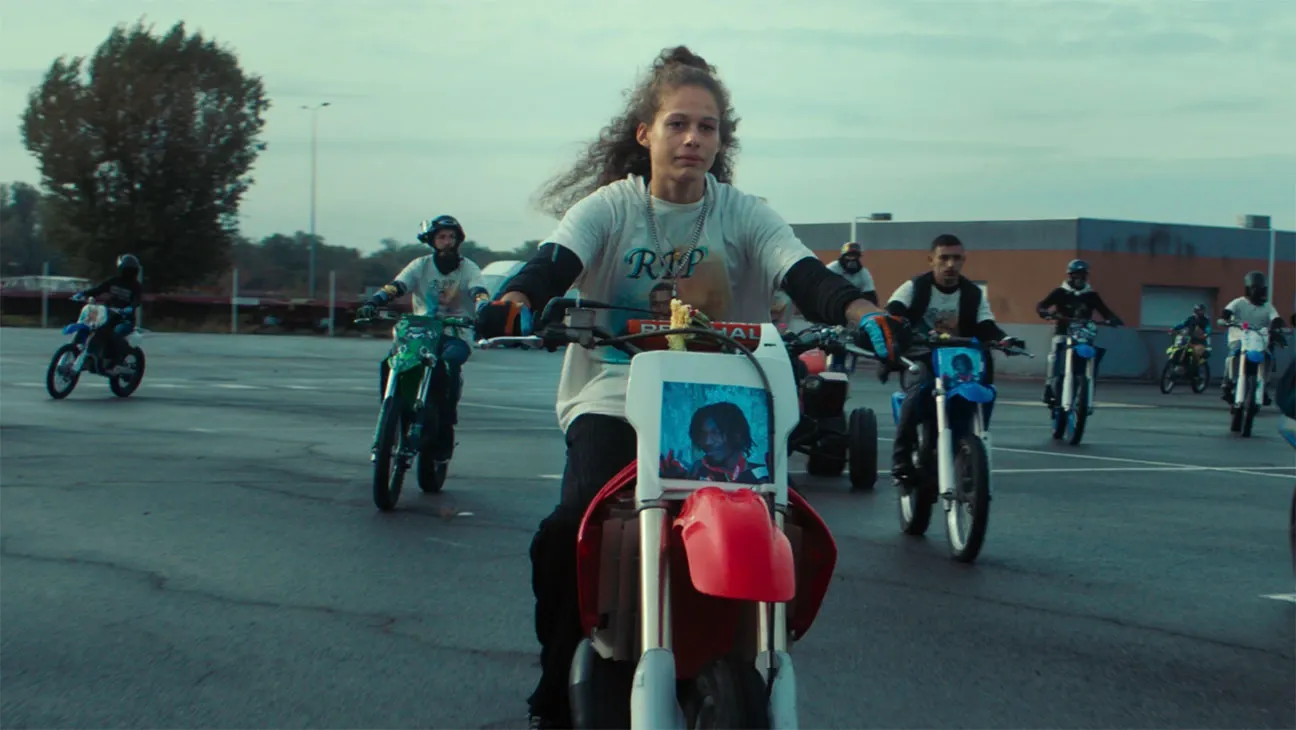By Inès de Boudemange, Third Year, Geography
Before entering Watershed's Screen 3, I didn't know the director Lola Quivoron and, to tell the truth, very few cinephiles did. With her first feature film Rodeo, Quivoron makes a remarkable entry, through lust and released breaks, into the worlds of both the small screen and asphalt pirates.
Rodeo (2022) tells the story of Julia, (Julie Ledru), a young woman from the suburbs who joins a group of cross-bitume bikers.
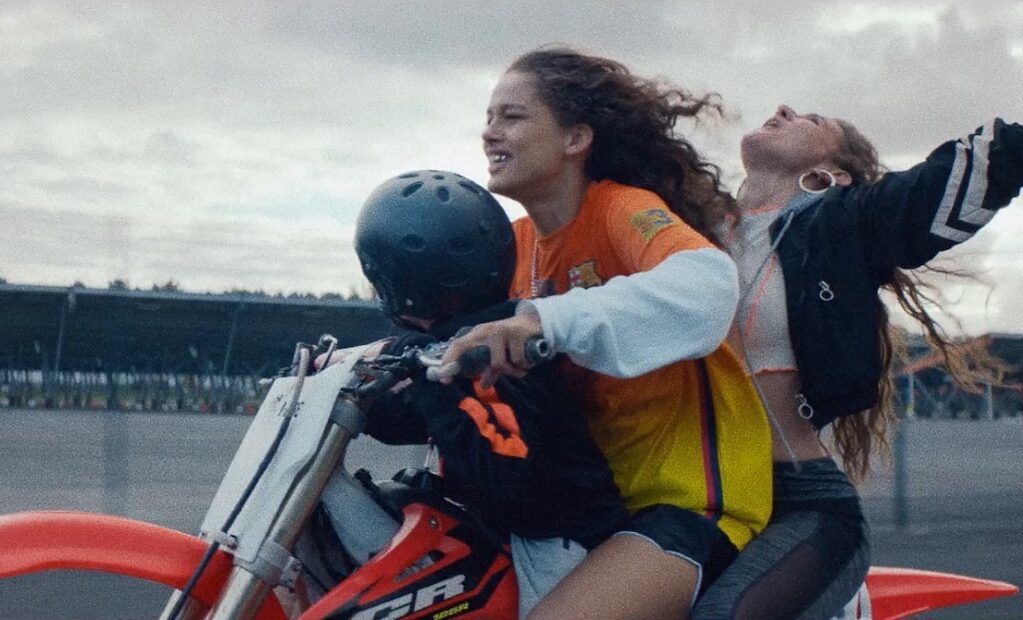
The opening scene is shot behind Julia's back, with the audience following her as she runs from her brother, who is trying to calm her down. Immediately, one catches that Rodeo is about her following her desires and questing for independence.
Coupled with stunning V4-style colouring, the onboard camera effects give us the impression of being on a motorbike and checking blind spots alertly - making viewers in the audience dizzy with delight.
From this initial argument, we hear a few scraps of voices, but most of all, we understand that Julia is running away from a family cocoon. It is not a bourgeois cocoon, very far from it, nor a place where love abounds, but the flat remains a safe one with a brother who is capable of caring; yet Julia wants to escape from it.
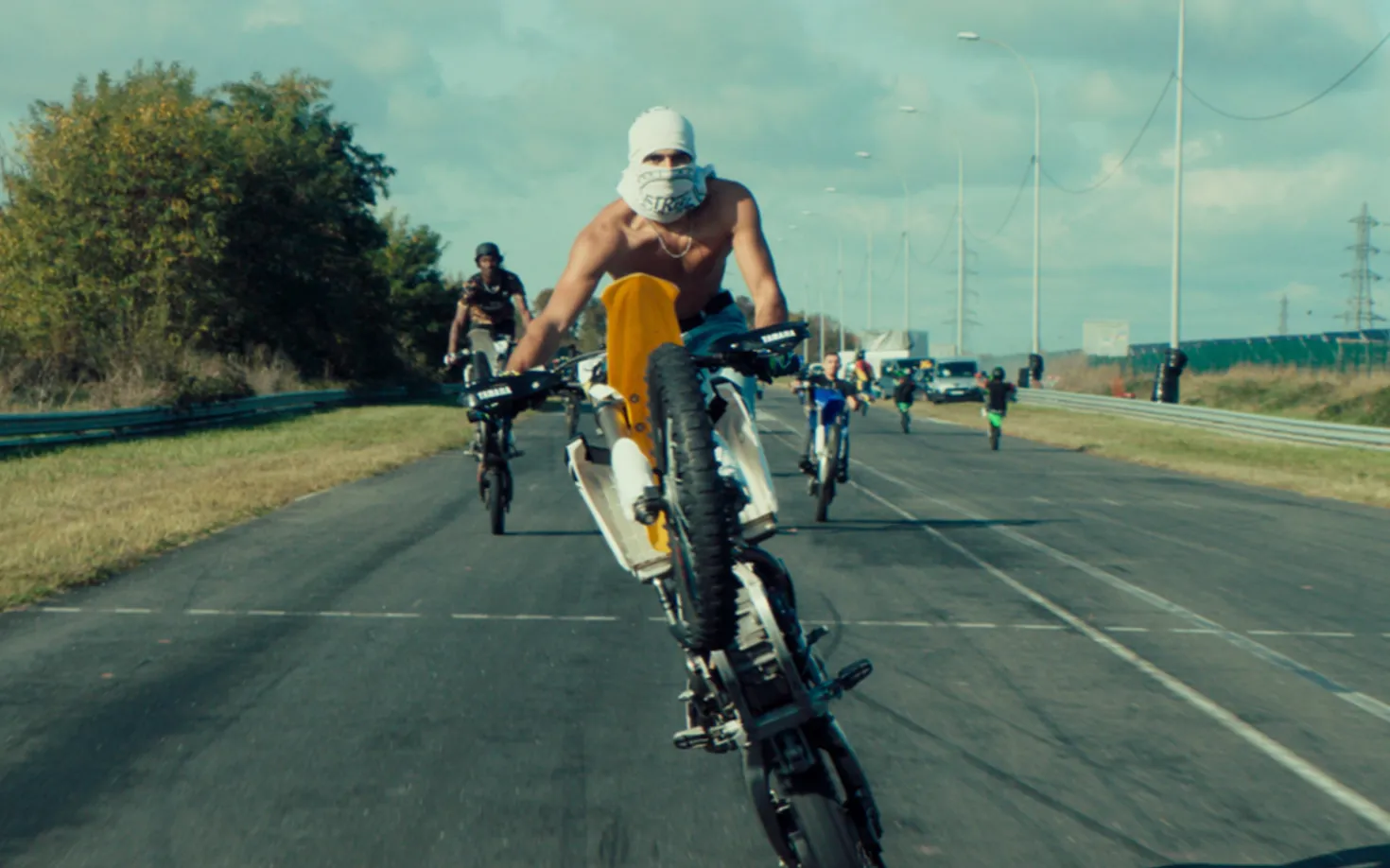
She also runs away from her job which seems stable: in short, she chooses to devote every hour of her life to her passion only, regardless of the normative codes. Very few scenes are shot in her hood, as this is where she feels suppressed and imprisoned.
In the first scene in which Julia appears alone on screen, and thus when the audience is plunged into her interiority, Julia is captured getting dressed and flirting with a particular salesman selling his motorbike: she wins his confidence and, through a finely crafted game of deception, runs off with it.
The movie race is on: it will be not only Julia against the definite future that a 'quiet' life would grant her, but also Julia against herself and the attributes others try to affix on her - that is to say, a sensuality and docility offered by the coaxing smiles she knows how to make but hates to.
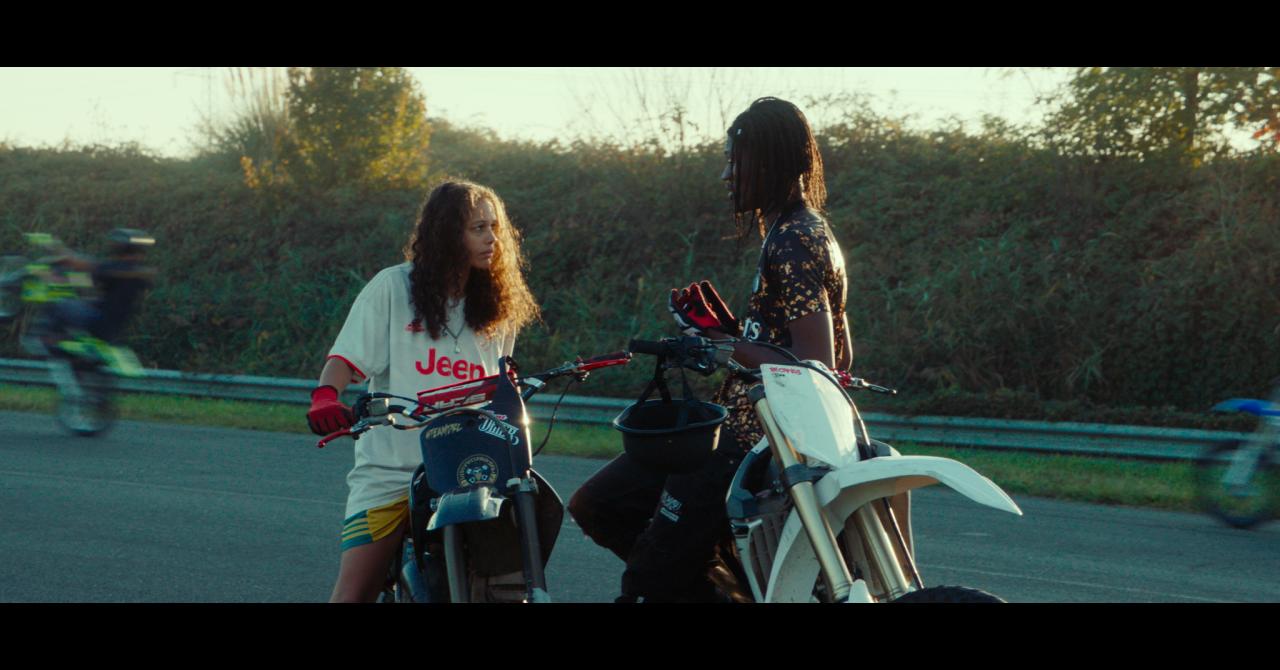
Leaving the salesman stunned, she gives him her best finger and then follows a bewildering scene of abandonment, where Julie screams with rage, joy and independence on her motorbike - incidentally, she will never be seen smiling elsewhere.
Vintage imagery, loose hair, and suburban landscapes, backed by incredible music: how can you not feel this irreverence, this immunity that burns everything in her path?
In an urban western setting, encounters between Julia and a group of bikers (the B-Mores) follow, to whom she gives rise to contradictory feelings: a crazy obsession with Kais, admiration, fear, and rejection. In short, she will be the subject of fantasy and acrimony, a kind of central figure around whom emotions will attach, clash, multiply, and divide - yet she only cares about bickering ‘quietly’.
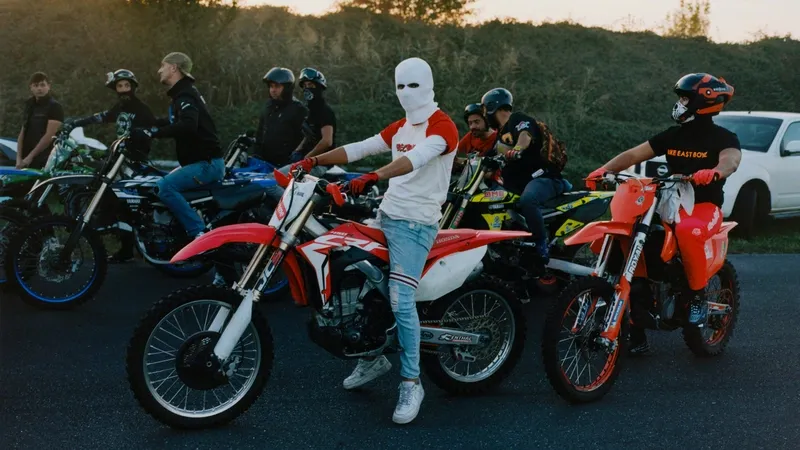
When the police arrive, after two of the bikers are injured and Julia loses her bike, she manages to escape by getting into the B-Mores' truck. As we guess that she will now never leave them, the camera reveals to the audience the movie’s poetic key. In this old van, in which minute mechanical details are filmed, the adrenaline drops and Julia (and the audience) finally inhale.
It's a lull; the bikes and desires are put away, a kind of after-sex moment that reminds me of Cronenberg’s Crash (1996) machine/human junction. As Julia becomes a B-More herself, the rest of the movie is saturated with moments of fraternity, emancipation, minor sensuality (minor as the film’s theme is unusual, showing an emancipated community), and the poetry of despair.
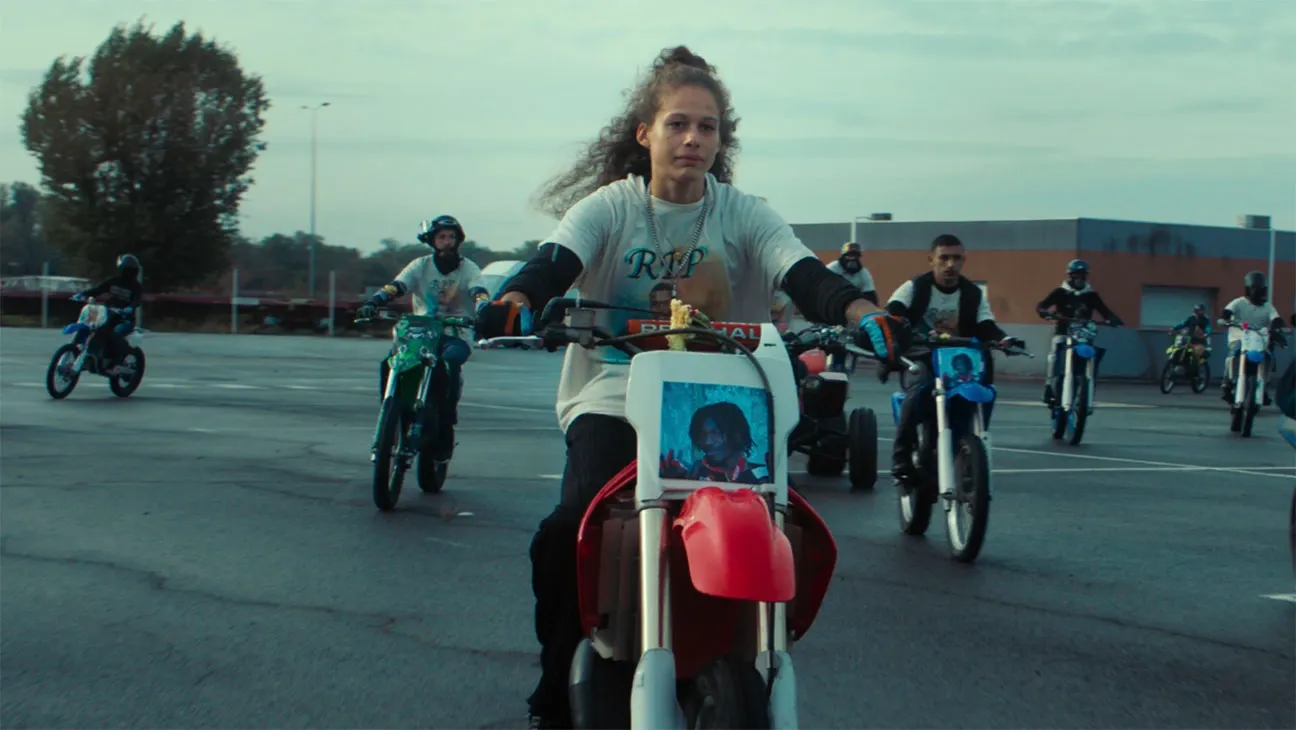
More than that, Quivoron also highlights the extra effort Julia has to make to fit in since she is a girl, mixing into the plot issues of sexism and patriarchy; physical and sexual violence; and power struggles. Acclaimed or rejected, Julia will never cease to divide, as evidenced by the historicity of the nicknames by which the B-Mores call her: successively, "the whore", "the stranger", "the pirate", "the golden egg", or "the witch".
Additionally, it is after the first affectionate and intimate service Julia renders to someone - Ophélie (Antonia Buresi), the woman unofficially sequestered by B-Mores’ leader - that a member of the squadron attacks her lazily and in the dark, going so far as to spray her with petrol and bring a lighter flame close to her body.
Rodeo is a densely-packed movie that cascades with feelings, climbs interdicts and offers freedom to all. The symbiosis of honey and vinegar as an axiom of life, this consecration to motorbike pistons will ignite Julia after her dream heist’s success and will leave an indelible hologram in the workshop of my cinematographic dreams.
Featured Image: CG Cinéma on IMDB
Will you be watching Lola Quivoron's directorial debut, Rodeo?

